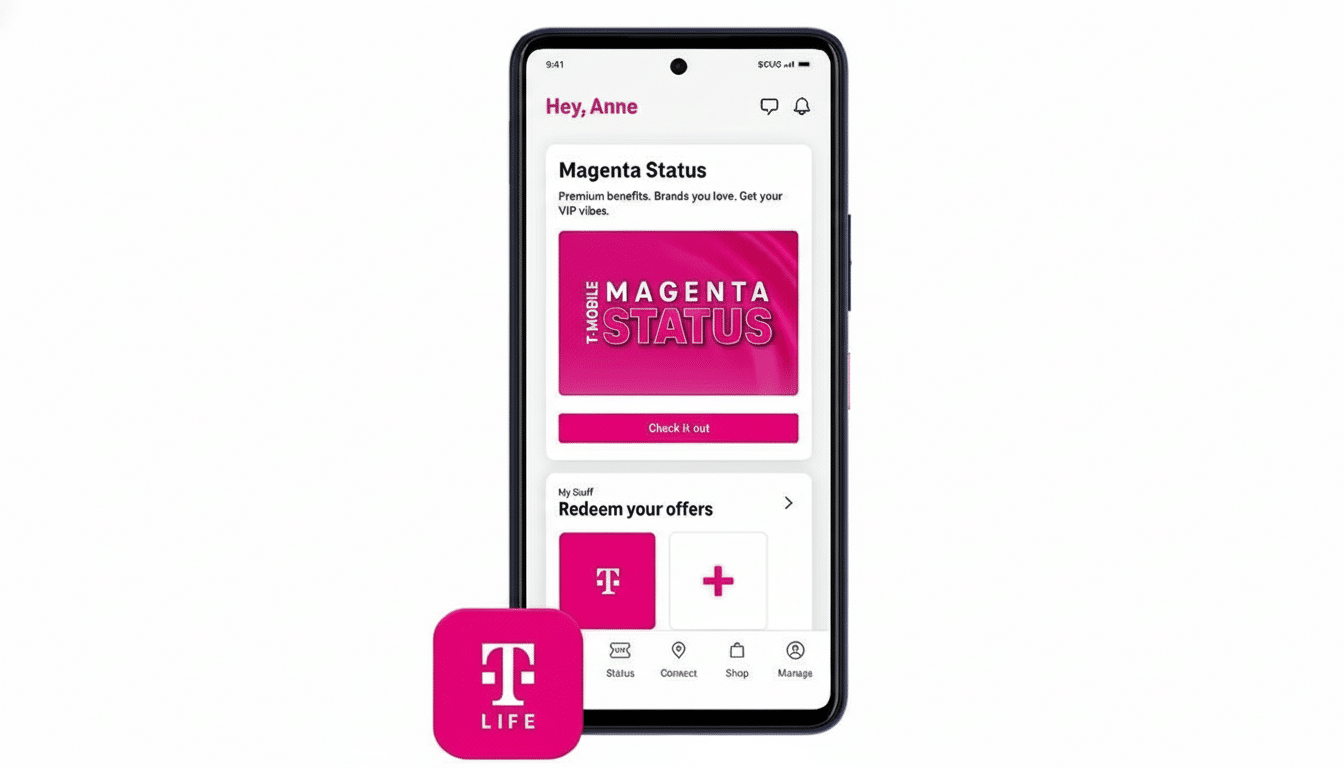T-Mobile is giving its T-Life app a major upgrade today with six new features, including an always-on assistant that resides inside the app. This update also includes enhanced in-app support options, early hooks for T-Satellite connectivity, faster cart edits when shopping, deeper T-Mobile Home Internet Wi-Fi controls, and a more sustainable update process.
The move reflects a broader shift to T-Life as the point of focus for customer service and account management. That comes after T-Mobile decided to push payment arrangements within the app, supplementing (and eventually ending) in-store and phone-based proposals for that task. Analysts who follow the industry have long noted that most service journeys now begin digitally, with Gartner stating in a report last year that approximately 70% of all customer interactions now start in self-service channels — as carriers lean into it to reduce wait times and improve resolution rates.

What the Always-On Assistant in T-Life Promises
T-Mobile’s always-on assistant is an ever-handy helper, there when you launch T-Life so you can ask questions, get account insights, and be walked through tasks — without having to jump around in menus.
Look for contextual prompts such as nudges about upcoming bills, prompts when you’re nearing the border of maxing out hotspot data, or suggestions tailored to your plan and devices.
For real-world troubleshooting, the assistant might even guide you through signal checks, SIM or eSIM steps, and Wi-Fi gateway diagnostics so that you don’t have to jump into a chat queue. Proactive nudges are where this can excel: consider travel advisories with roaming settings, or alerts when the app sees a home internet outage pattern. As with any AI-infused tool, transparency counts — people will want clear data and privacy controls, along with the ability to escalate at any time to a human.
Additional Support Without the Wait in T-Life
Outside of the assistant, T-Life is developing more support pathways. That might involve smarter triage that routes issues to the right specialist, more efficient callbacks, and richer self-help content that is based on known fix rates. Why it matters: In J.D. Power’s recent customer care studies, digital leaders have repeatedly been ranked highest in satisfaction by their customers. The study has connected the seamless flow for using their apps to quicker resolutions and decreased repeat contacts.
The game plan is straightforward — knock off easy tasks in-app as soon as possible and save your phone call time for the hard stuff. For customers, that ought to mean fewer taps just to do the basics — changing plans, toggling on an add-on like device protection, and making sure your bill is correct.
T-Satellite and Smarter Connectivity Controls
The T-Satellite integration opens the door for direct-to-cell connectivity cues to appear in T-Life as coverage is enabled. T-Mobile has already outlined its intent to provide satellite messaging and basic connectivity as a solution for dead zones via a partnership on space-based networks; having the status of that effort appear in-app will make it easier for users to find out where and when those capabilities are available without hunting through support pages.

T-Life’s enhanced Wi-Fi controls for home internet users should make daily management less of a bother. Look out for faster additions to renaming networks, managing connected devices, pausing access for family members, and seeing performance snapshots. In practical terms, that translates to fewer reboots and guesswork; better insight into what’s actually using your bandwidth; and quicker fixes when the connection hiccups.
Shopping Is More Streamlined and the Updates Are Greener
Flow tweaks that “fit the shopping experience like a glove,” like “quick changes in the cart,” may sound small — but they’re not. Research into mobile commerce continually finds that everything extra is a point of drop-off; minimizing the friction when one changes their device storage, colors, or goes to add something on their plan can help lift completion rates and cut down on customer frustration. It’s that kind of polish that can turn a 10-minute chore into one that takes a minute.
T-Mobile is also pushing the environmentally friendly angle of updates. Details are sparse, but this is moving in the direction of industry best practices like delta updates, on-Wi-Fi scheduling, and smaller packages. The International Energy Agency has reported that efficiency improvements are lowering the amount of energy required for each bit of data, but overall data use is increasing. Reducing the size of an update payload and eliminating the download of unnecessary files in the background is a cost-effective way to lower both network burden and battery usage on the device.
Why This Push Matters for T-Mobile Customers
For a carrier that has well over 100 million connections comprised of phones, tablets, gear like wearables, and home gateways, a move to consolidate customer care and account actions into one app that’s modern means fewer calls into call centers as it standardizes around the company.
If T-Life’s assistant can shield against the mundane and its support tools make escalations painless, customers win on speed while T-Mobile cuts service overhead.
There’s a downside: customers who like in-person or live phone help may feel squeezed as more functions move into T-Life. The success of this rollout will depend on providing the user with a clear choice — use the assistant when you need quick answers, and pivot to a human without friction in the case that your issue is nuanced or sensitive.
Bottom line: The T-Life upgrades are a reflection of where wireless service is going: proactive, app-first and, as it were, smarter. If T-Mobile delivers on the always-on promise with transparency and consistency, the app may become where customers first go when they need help — far before they ever think about calling in to support.

